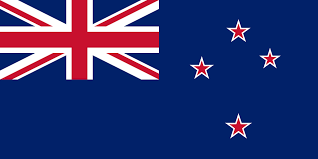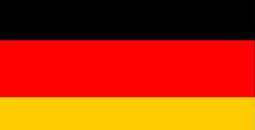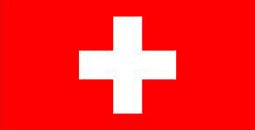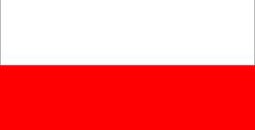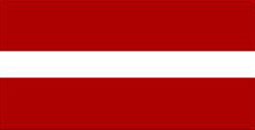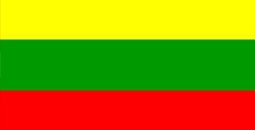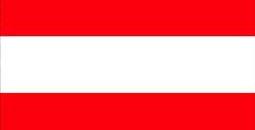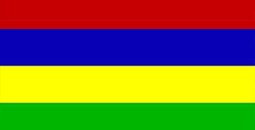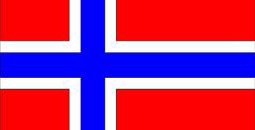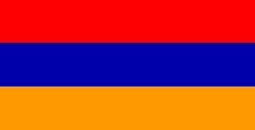Why study in Estonia
Want to study in Estonia? Contact us – Campus World Study in Estonia consultant in Kochi, Kerala
Estonia is a small EU member state located in Northern Europe and is a part of the Schengen area. There are lots of different travel options – but most international students probably see their first glimpse of Estonia from a plane or ship. Whether one is travelling by air, sea or land, none of the ports of entry is far from the centre of town. Tallinn is accessible from everywhere in the world by plane and, currently, nearly 30 cities have direct connections with Tallinn.
BY PLANE
Tallinn Airport has located just 3 km from the city centre. You will find a perpetual stream of taxis outside the arrival hall and it is by far the most convenient way to get to your hotel. A quick, 7-10 minute taxi ride from the airport to the city centre would cost you approximately 5-8 EUR regardless of a number of passengers or baggage. After the taxi ride ask also for the check – drivers are obliged to issue the check if asked. Furthermore, Riga International Airport is directly connected to over 60 destinations in 30 countries. There are both flight and bus connections from Riga Airport to Tartu and Tallinn.
Budget airlines that fly to the Baltics are Easyjet, which operates a Tallinn–London Stansted route and Tallinn-Liverpool route (from April 2011) and Ryanair, which flies from Tallinn Airport to 10 destinations in Germany, Italy, Spain, Sweden, Norway, the United Kingdom and Ireland.
Besides – Estonian Air, Finnair, Lufthansa and many other flight companies operate here.
BY SHIP
You can come to Estonia by ship from Helsinki and Stockholm and, additionally, from Rostock and St. Petersburg in the summer. Helsinki is a mere hour and a half away on an express ship in the summer and larger ships will take you in 4 hours throughout the year. The leading provider of high-quality mini-cruise and passenger transport services in the Baltic Sea region is Tallink.
Tallinn’s ever-expanding, passenger harbour (or reisisadam) has four terminals, A through D. A, B and C are on the Northside of the water inlet and D is on the other side. Buses 92 and 90 stop there and can take you further into the heart of the city centre. The old city is only three or four blocks away, so walking is also a good option.
Some speed boats arrive to another harbour behind the Linnahall building a few blocks away from the main passenger harbour. The old city is a skip and a hop away from it, too. Taxis are the easiest option to get to or from these harbours – but prices can get jacked up. There’s also a tram stop a short walk from both harbours on Rannamäe tee. Take any of them heading southeast to get to the city centre; just take a step or two.
BY BUS AND TRAIN
International coach lines connect Tallinn to Europe, and trains travel eastward.
Two coach companies, Eurolines and Ecolines, operate comfortable direct connections to all the biggest cities in Germany, Poland and the Baltic States, as well as Russia, Ukraine and even further afield. Furthermore, Hansabuss operates an (inexpensive) express business class route between Riga and Tallinn. The Intercity Bus Terminal (bussijaam) in Tallinn is also the starting point of coaches to every corner of Estonia. You can reach the city centre from the terminal with trams 2 or 4 heading up the Tartu manatee. The terminal is situated at 46 Lastekodu Street and is open every day from 06.30 until 21.30.
The train station (raudteejaam) is literally across the street from the Old Town. Unfortunately, it is not possible to take a train to Europe, but for travelling in Estonia – rail transport is the most comfortable form of transport.
CUSTOMS
On arrival and departure, a traveller must declare goods that are liable for import duties and taxes or for import restrictions at customs. Usually, international students do not enter or leave Estonia with anything prohibited or liable for import taxes, but in order to prevent any possible misunderstandings, it is reasonable to ask for additional information before leaving from the local customs office or from the customs information desk or get more information from the web site of the Estonian Ministry of Foreign Affairs.
ACCOMMODATION
There are several options for arranging accommodation and these differ from one university to another.
Some universities have student dormitories with single, double and triple rooms. Housing costs depend on the location and quality of the accommodation but the prices per month usually range from 80-190 EUR in the dormitories to 100-510 EUR in private flats.
Private rooms or flats can be found through newspaper advertisements, websites or real estate agencies operating in the city. However, the best flats are most often found via local acquaintances and friends. The International Relations Office can help you in finding accommodation or recommending another university employee or student who could help arrange to the house. You should be careful and look for an apartment with the help of Estonian students, friends or professors – like everywhere, then also in Estonia, the rents might be typically inflated for foreigners.
It is common for international students to share bigger flats in the city centre. Rental prices in the centre may be a bit more expensive but one can cut costs and time on transportation. Splitting the rent amongst friends may offer an opportunity to find great accommodation at an affordable price. Prices can vary widely depending on the number of rooms and facilities offered.
On closing a rental deal, be prepared to pay a deposit. Generally, the deposit is the equivalent of three months rent; one month’s rent will be returned to you upon your departure, provided that the accommodation is left in acceptable condition.
You can check the following websites to get the aim of offered apartments:
http://www.kv.ee/
http://www.city24.ee/
http://www.estate24.ee/
RESIDENCE PERMIT FOR STUDY
All students who are not Estonian citizens or EU citizens (including EEA countries and Switzerland) need a temporary residence permit for study. EU citizens should obtain a temporary right of residence in Estonia. The temporary right of residence is granted for a period of 5 years. In order to obtain a temporary right of residence, a student should register his/her place of residence in the Local Government authority of the place of residence within 3 months from the day of entry to Estonia. In addition, a student has to apply for Estonian ID-card within 1 month from obtaining the temporary right of residence. More information can be found from the Estonian Police and Border Guard Board web page.
Students who are third-country nationals (not EU citizens) have to apply for a temporary residence permit for study at the Estonian Embassy or Consul in their home country or country of residence
(more info on the page of the Estonian Ministry of Foreign Affairs). If there is no Estonian Embassy or Consul in your home country or country of residence, you should contact the nearest Estonian Embassy.
Starting from the 1st of October 2010, all third-country nationals who already stay legally in Estonia and wish to study at Masters or Doctoral level have a right to apply for a residence permit for study at the Police and Border Guard Board.
A temporary residence permit is valid for a maximum of one year and should be renewed at least 2 months before the date of expiration at the Police and Border Guard Board Estonian ID-card issued to a student is a document, stating that a student was issued a temporary residence permit for study in Estonia.
Students from third countries have to register their place of residence in the Local Government authority within 1 month from the arrival to Estonia on the basis of residence permit for study.
Don’t forget:
All the institutions that provide international study programmes are experienced in advising international applicants!
International offices are always there for you – do not hesitate to ask their help!
WORK PERMIT
– Citizens of the EU, the European Economic Area and Switzerland do not need a working permit for Estonia
– Students from other countries who have a residence permit for study in Estonia can apply for a work permit at the Police and Border Guard Board. You need written confirmation from the education institution at which you are studying
– The maximum period of validity for a student work permit is the period of validity of the residence permit
More information:
– Estonians work 40 hours per week
– The working day is usually 08.00-17.00 or 09.00-18.00
HOW TO FIND A JOB?
In Estonia it is usual to send an e-mail to a potential employer, phone calls may work but are not normally preferred. You should send a CV, and a motivation letter is often requested. Be ready for an interview. Most Estonian students work and study at the same time. Having a part-time job is very common.
Places where you can look for job vacancies:
– Career centres and info desks in universities
– Websites
– Friends, classmates and local students
– Direct contact with someone from the company, which can be made from the company’s website
How much will they pay me?
– average monthly salary: 758 EUR per month (first quarter of 2010) for a full-time work
– minimum salary: 278 EUR
Processing the application takes about a month. Additional information concerning work permits can be found from the Citizenship and Migration Bureau. You can also check these links – these are the most popular internet recruitment companies.
www.cvkeskus.ee/
www.cv.ee/
Estonia is a small EU member state located in Northern Europe and is a part of the Schengen area. There are lots of different travel options – but most international students probably see their first glimpse of Estonia from a plane or ship. Whether one is travelling by air, sea or land, none of the ports of entry is far from the centre of town. Tallinn is accessible from everywhere in the world by plane and, currently, nearly 30 cities have direct connections with Tallinn.
BY PLANE
Tallinn Airport has located just 3 km from the city centre. You will find a perpetual stream of taxis outside the arrival hall and it is by far the most convenient way to get to your hotel. A quick, 7-10 minute taxi ride from the airport to the city centre would cost you approximately 5-8 EUR regardless of a number of passengers or baggage. After the taxi ride ask also for the check – drivers are obliged to issue the check if asked.
Furthermore, Riga International Airport is directly connected to over 60 destinations in 30 countries. There are both flight and bus connections from Riga Airport to Tartu and Tallinn.
Budget airlines that fly to the Baltics are Easyjet, which operates a Tallinn–London Stansted route and Tallinn-Liverpool route (from April 2011) and Ryanair, which flies from Tallinn Airport to 10 destinations in Germany, Italy, Spain, Sweden, Norway, the United Kingdom and Ireland.
Besides – Estonian Air, Finnair, Lufthansa and many other flight companies operate here.
BY SHIP
You can come to Estonia by ship from Helsinki and Stockholm and, additionally, from Rostock and St. Petersburg in the summer. Helsinki is a mere hour and a half away on an express ship in the summer and larger ships will take you in 4 hours throughout the year. The leading provider of high-quality mini-cruise and passenger transport services in the Baltic Sea region is Tallink.
Tallinn’s ever-expanding, passenger harbour (or reisisadam) has four terminals, A through D. A, B and C are on the Northside of the water inlet and D is on the other side. Buses 92 and 90 stop there and can take you further into the heart of the city centre. The old city is only three or four blocks away, so walking is also a good option.
Some speed boats arrive at another harbour behind the Linnahall building a few blocks away from the main passenger harbour. The old city is a skip and a hop away from it, too. Taxis are the easiest option to get to or from these harbours – but prices can get jacked up. There’s also a tram stop a short walk from both harbours on Rannamäe tee. Take any of them heading southeast to get to the city centre; just take a step or two.
BY BUS AND TRAIN
International coach lines connect Tallinn to Europe, and trains travel eastward.
Two coach companies, Eurolines and Ecolines, operate comfortable direct connections to all the biggest cities in Germany, Poland and the Baltic States, as well as Russia, Ukraine and even further afield. Furthermore, Hansabuss operates an (inexpensive) express business class route between Riga and Tallinn. The Intercity Bus Terminal (bussijaam) in Tallinn is also the starting point of coaches to every corner of Estonia. You can reach the city centre from the terminal with trams 2 or 4 heading up the Tartu manatee. The terminal is situated at 46 Lastekodu Street and is open every day from 06.30 until 21.30.
The train station (raudteejaam) is literally across the street from the Old Town. Unfortunately, it is not possible to take a train to Europe, but for travelling in Estonia – rail transport is the most comfortable form of transport.
CUSTOMS
On arrival and departure, a traveller must declare goods that are liable for import duties and taxes or for import restrictions at customs. Usually, international students do not enter or leave Estonia with anything prohibited or liable for import taxes, but in order to prevent any possible misunderstandings, it is reasonable to ask for additional information before leaving from the local customs office or from the customs information desk or get more information from the web site of the Estonian Ministry of Foreign Affairs.
ACCOMMODATION
There are several options for arranging accommodation and these differ from one university to another.
Some universities have student dormitories with single, double and triple rooms. Housing costs depend on the location and quality of the accommodation but the prices per month usually range from 80-190 EUR in the dormitories to 100-510 EUR in private flats.
Private rooms or flats can be found through newspaper advertisements, websites or real estate agencies operating in the city. However, the best flats are most often found via local acquaintances and friends. The International Relations Office can help you in finding accommodation or recommending another university employee or student who could help arrange to the house. You should be careful and look for an apartment with the help of Estonian students, friends or professors – like everywhere, then also in Estonia the rents might be typically inflated for foreigners.
It is common for international students to share bigger flats in the city centre. Rental prices in the centre may be a bit more expensive but one can cut costs and time on transportation. Splitting the rent amongst friends may offer an opportunity to find great accommodation at an affordable price. Prices can vary widely depending on the number of rooms and facilities offered.
On closing a rental deal, be prepared to pay a deposit. Generally, the deposit is the equivalent of three months rent; one month’s rent will be returned to you upon your departure, provided that the accommodation is left in acceptable condition.
You can check the following websites to get the aim of offered apartments:
http://www.kv.ee/
http://www.city24.ee/
http://www.estate24.ee/
RESIDENCE PERMIT FOR STUDY
All students who are not Estonian citizens or EU citizens (including EEA countries and Switzerland) need a temporary residence permit for study. EU citizens should obtain a temporary right of residence in Estonia. The temporary right of residence is granted for a period of 5 years.
In order to obtain a temporary right of residence, a student should register his/her place of residence in the Local Government authority of the place of residence within 3 months from the day of entry to Estonia. In addition, a student has to apply for Estonian ID-card within 1 month from obtaining the temporary right of residence. More information can be found from the Estonian Police and Border Guard Board web page.
Students who are third-country nationals (not EU citizens) have to apply for a temporary residence permit for study at the Estonian Embassy or Consul in their home country or country of residence
(more info on the page of the Estonian Ministry of Foreign Affairs). If there is no Estonian Embassy or Consul in your home country or country of residence, you should contact the nearest Estonian Embassy.
Starting from the 1st of October 2010, all third-country nationals who already stay legally in Estonia and wish to study at Masters or Doctoral level have a right to apply for a residence permit for study at the Police and Border Guard Board.
A temporary residence permit is valid for a maximum of one year and should be renewed at least 2 months before the date of expiration at the Police and Border Guard Board Estonian ID-card issued to a student is a document, stating that a student was issued a temporary residence permit for study in Estonia.
Students from third countries have to register their place of residence in the Local Government authority within 1 month from the arrival to Estonia on the basis of residence permit for study.
Don’t forget:
All the institutions that provide international study programmes are experienced in advising international applicants!
International offices are always there for you – do not hesitate to ask their help!
WORK PERMIT
– Citizens of the EU, the European Economic Area and Switzerland do not need a working permit for Estonia
– Students from other countries who have a residence permit for study in Estonia can apply for a work permit at the Police and Border Guard Board. You need written confirmation from the education institution at which you are studying
– The maximum period of validity for a student work permit is the period of validity of the residence permit
More information:
– Estonians work 40 hours per week
– The working day is usually 08.00-17.00 or 09.00-18.00
HOW TO FIND A JOB?
In Estonia it is usual to send an e-mail to a potential employer, phone calls may work but are not normally preferred. You should send a CV, and a motivation letter is often requested. Be ready for an interview. Most Estonian students work and study at the same time. Having a part-time job is very common.
Places where you can look for job vacancies:
– Career centres and info desks in universities
– Websites
– Friends, classmates and local students
– Direct contact with someone from the company, which can be made from the company’s website
How much will they pay me?
– average monthly salary: 758 EUR per month (first quarter of 2010) for a full-time work
– minimum salary: 278 EUR
Processing the application takes about a month. Additional information concerning work permits can be found from the Citizenship and Migration Bureau. You can also check these links – these are the most popular internet recruitment companies.
www.cvkeskus.ee/
www.cv.ee/
WHY ESTONIA?
Most likely you have asked yourself:
Why should you come to study in Estonia?
Here are some of the reasons:
– Internationally accepted diplomas
– The English language widely is spoken
– Free internet access nearly everywhere
– Vibrant student life
– The personal touch
– Value for money
– A safe and stable environment
– Excellent support services by our universities
Estonia has developed really fast during the last decades and certainly, you would like many things here:
– Estonia was the first country to facilitate online voting nationwide
– In January 2010, the capital city of Tallinn was chosen among the worlds seven most intelligent communities for the fourth year in a row byintelligentcommunity.org
– Estonia is an e-society, with electronic ID-cards, e-government, etc.
– Tallinn is the 2011 European Capital of Culture
– The homeland of Skype – the Skype software was developed by Estonians
– Reporters Without Borders ranks Estonia 3rd worldwide in The Press Freedom Index
Want to study in Estonia? Contact us – Campus World Study in Estonia consultant in Kochi, Kerala



